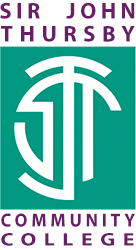Topic 1 Year 8 chemistry
| Chemistry | |||
| Topic | Matter 2 | ||
| No of lessons | 12 | ||
| When is it happening | Year 8 Term 1 | ||
| What will students learn | Elements are arranged on the periodic table and that the place they occupy has significance to their properties and trends in reactivity. How the periodic table is arranged in groups and periods. The names of significant groups including: alkali metals, transition metals, noble gases and halogens. How to make predictions based on the location of an element on the periodic table. How the periodic table was developed. Students will be able to identify the differences and similarities in an element, compound and mixture. They will also be able to accurately draw each of this using particle theory. Students will be able to describe the structure of some general and specific compounds ( atoms, molecules, polymers and giant structures). Students will learn how to represent elements/compounds using chemical formulae. How to name simple compounds. How we have developed and use composite materials and ceramics. | ||
| Key Knowledge that students should know at the end of 'Topic' | This is the knowledge that students will meet for the first time in this topic | Identify the location of named elements or find elements from the location. What the key word inert means. Be able to investigate/describe the reactions of group 1 elements with oxygen/water. Create symbol equations. Describe the change of physical properties of the halogens. Use the periodic table to make predictions. The roles played by Dobereiner, Newlands and Mendeleev. How to name simple compounds. Recall the symbols of some simple elements. Most substances are compounds and not pure elements. The definition of: group, period, inert, chemical properties, physical properties, trend, element, atom, molecules, compound, chemical formula, electrolysis and polymer | |
| This is knowledge that students may have met before but will need to deepen their understanding | Students should already be able to identify solids, liquids or gases, name some examples and describe some of their physical properties. Knowledge of the role of the periodic table, some knowledge of some simple elements and compounds. | ||
| Key Skills that students should be able to demonstrate at the end of 'Topic' | This is the skills that students will meet for the first time in this topic | Can write simple word equations/chemical symbol equations. Recognise, predict and describe trends/patterns in the periodic table both chemical (reactions) and physical. | |
| This is skills that students may have met before but will need to develop | Draw elements, compounds and mixtures using particle theory. Balance/complete equations | ||
| Key vocabulary that students should know and understand |
Inert, chemical properties, physical properties, group, period, alkali metals, halogen, trend, prediction, triads, octaves, element, compound, chemical formula, molecule, polymer, giant structure, ceramic, composite, electrolysis. |
||
| The Big Question | What is the periodic table and how do we use it? | ||
|
Key questions that students should be able to answer at the end of the 'Topic' |
How is the periodic table structured? | ||
| Does bubble bath contain Francium? | |||
| What is a Salt maker? | |||
| Are predictions and guessing the same thing? | |||
| How has the periodic table changed? | |||
| What happens when atoms join together? | |||
| How can we show the atoms in a substance? | |||
| What are chemical formulae, and how do I use them? | |||
| How useful is a chocolate teapot? | |||
| Element or Compound? | |||
